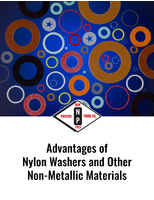ATi Introduces New FOC Process Application Note about Reagent-Free Residual Chlorine Measurement
February 16, 2007: Analytical Technology Inc. (ATi) introduces a new free of charge application note entitled "Regent free Residual Chlorine Measurement in process with variable and/or high pH. The new application note discusses how ATi's Q45H62 monitoring system measures free chlorine residuals without the need for chemical buffering traditionally associated with such measurements. Acetate and phosphate buffers are expensive and environmentally unfriendly, causing all major water companies to look for alternatives to traditional technology. ATi's pH corrected monitor uses a membrane-covered polarographic sensor that does not require the addition of costly chemical reagents. The new application note is of particular interest to water and wastewater companies, plus process, petrochemical, pharmaceutical, metals and food and beverage industries where water is used.
Traditional amperometric cells and polarographic probes only respond to hypochlorous acid (HOCI). HOCI dissociates into hypochlorite (OCI-) in a pH dependent manner, leading to the need for chemical buffering in the majority of applications. The typical pH of water measured on a water treatment works may range from 7 to 9.2, chemical buffering reduces the pH to between 5 and 6 and ensures that all the residual chlorine is present as HOCI. Some manufacturers have proposed a combined HOCI and pH monitor could help eliminate the need for buffer. However, there are a number of problems with such a monitor, including different response times, errors in pH measurements, low signals and the lack of standard response curves.
The ATi Q45H62 pH corrected chlorine monitor overcomes the problems of traditional amperometric monitors. For example, the ATi sensor has a response time around 10 times higher than that of conventional sensors at high pH values (pH >8.3). This means that the monitor can be used reagent free over all the pH values found in the UK drinking water industry. In variable pH applications the Q45H62 utilises an optional pH compensation feature to eliminate free chlorine error caused by process pH drift. If the correct sensor is used there is an extended response to chlorine at high pH levels, allowing pH correction to be employed over a much wider range.
In addition, the ATi sensor is resistant to many of the common contaminants found in water treatments, such as iron, manganese and poly phosphate. ATi's pH corrected membrane monitors are proving as stable and accurate as traditionally buffered monitors, thus offering the water industry a new way forward. As a result of a number of industry evaluations these monitors are fast becoming the preferred instrument of choice.
The findings on the accuracy of ATi's monitor are detailed in a new, free of charge process application note available from ATi. For more information about ATi's ph corrected chlorine monitor, other ATi products or for a copy of the process application note, please call 01457 832800, e-mail info@analyticaltechnology.com or visit www.analyticaltechnology.com



